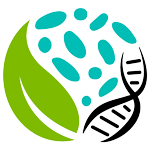Molecular changes concomitant with vascular system development in mature galls induced by root-knot nematodes in the model tree host Populus tremula x alba.
Fabien Baldacci-Cresp, Marc Behr, Annegret Kohler, Nelly Badalato, Kris Morreel, Geert Goeminne, Adeline Mol, Janice de Almeida Engler, Wout Boerjan, Mondher El Jaziri and Marie Baucher
09 January 2020, International Journal of Molecular Sciences 21(2): pii; doi: 10.3390/ijms21020406
Abstract
One of the most striking features occurring in the root-knot nematode Meloidogyne incognita induced galls is the reorganization of the vascular tissues. During the interaction of the model tree species Populus and M. incognita, a pronounced xylem proliferation was previously described in mature galls. To better characterise changes in expression of genes possibly involved in the induction and the formation of the de novo developed vascular tissues occurring in poplar galls, a comparative transcript profiling of 21-day-old galls versus uninfected root of poplar was performed. Genes coding for transcription factors associated with procambium maintenance and vascular differentiation were shown to be differentially regulated, together with genes partaking in phytohormones biosynthesis and signalling. Specific signatures of transcripts associated to primary cell wall biosynthesis and remodelling, as well as secondary cell wall formation (cellulose, xylan and lignin) were revealed in the galls. Ultimately, we show that molecules derived from the monolignol and salicylic acid pathways and related to secondary cell wall deposition accumulate in mature galls.

